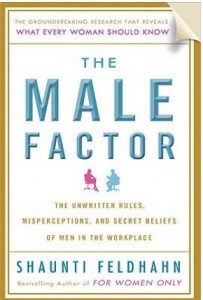In a groundbreaking disclosure, Google revealed how very white and male its workforce is — just 2 percent of its Googlers are black, 3 percent are Hispanic, and 30 percent are women.
The search giant said Wednesday that the transparency about its workforce — the first disclosure of its kind in the largely white, male tech sector — is an important step toward change.
“Simply put, Google is not where we want to be when it comes to diversity,” Google Inc. senior vice president Laszlo Bock wrote in a blog.
The numbers were compiled as part of a report that major U.S. employers must file with the Equal Employment Opportunity Commission. Companies are not required to make the information public.
The gender divide is based on the roughly 44,000 people Google employed throughout the world at the start of this year. The company didn’t factor about 4,000 workers at its Motorola Mobility division, which is being sold to China’s Lenovo Group for $2.9 billion. The racial data is limited to Google’s roughly 26,600 workers in the U.S as of August 2013.
Facebook chief operating officer Sheryl Sandberg recently said the social networking company is headed toward disclosure as well, but it was important to share the data internally first.
Apple Inc., Twitter, Hewlett-Packard Co. and Microsoft Corp. did not respond immediately to queries about possible plans to disclose data.
Bock said Google has been working to diversify, not just its offices but in the broader tech sector. Since 2010, the firm has given more than $40 million to organizations working to bring computer science education to women and girls, he said.
The company also is working with historically black colleges and universities to elevate coursework and attendance in computer science, he said.
“But we’re the first to admit that Google is miles from where we want to be, and that being totally clear about the extent of the problem is a really important part of the solution,” he said.
Gender and ethnic disparities are reflected throughout the tech industry. About 7 percent of tech workers are black or Latino in Silicon Valley and nationally. Blacks and Hispanics make up 13.1 and 16.9 percent of the U.S. population, respectively, according to the most recent Census data.
In the coming months, Google said, it will work with the Kapor Center for Social Impact, a group that uses information technology to close gender and ethnic gaps in the Silicon Valley workforce. The center will be organizing a Google-backed conference in California focusing on issues of technology and diversity.
Co-founder Freada Kapor Klein, who started the Level Playing Field Institute 13 years ago to teach and mentor black and Latino students in science and math, said Google is showing leadership “which has been sorely needed for a long time.”
“Google is the company known for the moonshot, and applying that part of Google DNA to this problem is a breath of fresh air,” she said.
Earlier this year, the Rev. Jesse Jackson launched a campaign to diversify Silicon Valley, asking to meet with leaders of several iconic technology companies about bringing black and Hispanics into their workforce and leadership.
Since then, he’s been leading delegations to annual shareholder’s meetings at firms including Google, Facebook, eBay Inc. and Hewlett-Packard.
On Wednesday Jackson said Google is to be commended.
“It’s a bold step in the right direction. We urge other companies to follow Google’s lead,” he said. “Silicon Valley and the tech industry have demonstrated an ability to solve the most challenging and complex problems in the world. Inclusion is a complex problem — if we put our collective minds together, we can solve that too.”
Iris Gardner, a manager at nonprofit Code2040, which places high performing black and Latino software engineering students in internships with top tech companies, said Google’s disclosure could mark a pivotal moment in the push to diversify Silicon Valley.
“It is a big deal for them to be transparent about something that most companies haven’t in the past been willing to share,” she said

Not Google










